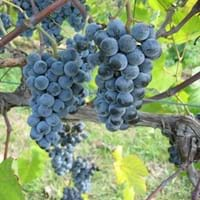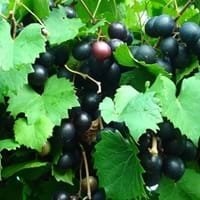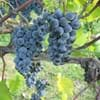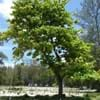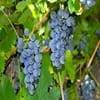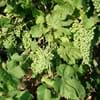Life Span
Perennial
Perennial
Origin
Northeastern United States
Southeastern United States, Mexico
Types
Not Available
Not available
Habitat
Forests, meadows, River side, Riverbanks
Lowland, sand dunes, Upland
USDA Hardiness Zone
4-9
6-10
Sunset Zone
2b, 3a, 3b, 6, 7, 8, 9, 14, 15, 16, 17, 18, 19, 20, 21, 22, 23
Not Available
Habit
Vining/Climbing
Vining/Climbing
Minimum Height
Not Available
Minimum Width
Not Available
Flower Color
White
White, Green
Flower Color Modifier
Bicolor
Bicolor
Fruit Color
Blue, Dark Blue, Black
Green, Burgundy, Plum, Bronze, Brown
Leaf Color in Spring
Green
Green
Leaf Color in Summer
Green
Green
Leaf Color in Fall
Orange, Gold, Bronze
Green, Gold, Tan
Leaf Color in Winter
Light Green
Light Green
Leaf Shape
Lobed
V-Shaped
Plant Season
Spring, Summer, Fall
Spring, Summer, Fall
Sunlight
Full Sun, Partial Sun
Full Sun, Partial Sun
Type of Soil
Clay, Loam, Sand
Clay, Loam, Sand
The pH of Soil
Acidic, Neutral, Alkaline
Acidic, Neutral
Soil Drainage
Well drained
Well drained
Bloom Time
Late Spring, Early Summer, Summer
Spring, Late Spring, Early Summer
Tolerances
Drought
Pests and diseases, Shade areas
Where to Plant?
Ground
Ground, Pot
How to Plant?
Seedlings
Layering, Seedlings
Plant Maintenance
Medium
Medium
Watering Requirements
Average Water Needs, Needs Very high moisture, Sprinkle water over foliage
Requires regular watering, Water during dry weather
In Summer
Lots of watering
Lots of watering
In Spring
Moderate
Moderate
In Winter
Average Water
Average Water
Soil pH
Acidic, Neutral, Alkaline
Acidic, Neutral
Soil Type
Clay, Loam, Sand
Clay, Loam, Sand
Soil Drainage Capacity
Well drained
Well drained
Sun Exposure
Full Sun, Partial Sun
Full Sun, Partial Sun
Pruning
Remove damaged leaves, Remove dead branches, Remove dead leaves
Remove branches that rub together, Remove damaged leaves, Remove dead branches, Remove dead leaves
Fertilizers
All-Purpose Liquid Fertilizer, Apply N-P-K
Apply 10-10-10 amount, Apply N-P-K, Requires high amount of nitrogen
Pests and Diseases
Beetles, Flea Beetles, Leaf Hoppers, Leaf Rollers, Mealy bugs, Red blotch
Leaf spot, Nematodes, Powdery mildew
Plant Tolerance
Deer resistant, Drought, Heat And Humidity
Pests and diseases, Shade areas
Flowers
Insignificant
Insignificant
Flower Petal Number
Single
Single
Foliage Texture
Coarse
Medium
Foliage Sheen
Glossy
Glossy
Attracts
Not Available
Birds
Allergy
Not Available
Not Available
Aesthetic Uses
Not Available
Beautification
Beauty Benefits
Not Available
Not Available
Environmental Uses
Air purification
Agroforestry
Medicinal Uses
Miscellany, Poultice
anti-inflammatory, Anti-oxidant
Part of Plant Used
Fruits, Leaves, Sap
Fruits, Leaves
Other Uses
Used as a dye
Sometimes used for making wine, Used to make juice, Used to make yellow dye
Used As Indoor Plant
No
No
Used As Outdoor Plant
Yes
Yes
Garden Design
Edible, Fruit / Fruit Tree, Vine
Edible, Fruit / Fruit Tree, Rock Garden / Wall, Screening / Wind Break, Topiary / Bonsai / Espalier, Vine
Botanical Name
VITIS labrusca 'Concord'
VITIS rotundifolia
Common Name
Concord Grape, Fox Grape
Muscadine
In Hindi
Concord Grape
Muscadine
In German
Concord Grape
Muscadine
In French
Concord Grape
Muscadine
In Spanish
uva Concord
Muscadine
In Greek
σταφυλιού Concord
μοσχοστάφυλο
In Portuguese
uva Concord
Muscadine
In Polish
Concord winogron
Muscadine
In Latin
Concordia pluribus
Muscadine
Phylum
Tracheophyta
Magnoliophyta
Class
Magnoliopsida
Magnoliopsida
Clade
Angiosperms, Eudicots, Rosids
Angiosperms, Eudicots, Rosids
Tribe
Not Available
Not Available
Subfamily
Not Available
Not Available
Importance of Concord Grape and Muscadine
Want to have the most appropriate plant for your garden? You might want to know the importance of Concord Grape and Muscadine. Basically, these two plants vary in many aspects. Compare Concord Grape and Muscadine as they differ in many characteristics such as their life, care, benefits, facts, etc. Every gardener must at least have the slightest clue about the plants he wants to plant in his garden. Compare their benefits, which differ in many ways like facts and uses. The medicinal use of Concord Grape is Miscellany and Poultice whereas of Muscadine is anti-inflammatory and Anti-oxidant. Concord Grape has beauty benefits as follows: Not Available while Muscadine has beauty benefits as follows: Not Available.
Compare Facts of Concord Grape vs Muscadine
How to choose the best garden plant for your garden depending upon its facts? Here garden plant comparison will help you to solve this query. Compare the facts of Concord Grape vs Muscadine and know which one to choose. As garden plants have benefits and other uses, allergy is also a major drawback of plants for some people. Allergic reactions of Concord Grape are Not Available whereas of Muscadine have Not Available respectively. Having a fruit bearing plant in your garden can be a plus point of your garden. Concord Grape has showy fruits and Muscadine has showy fruits. Also Concord Grape is not flowering and Muscadine is not flowering . You can compare Concord Grape and Muscadine facts and facts of other plants too.
